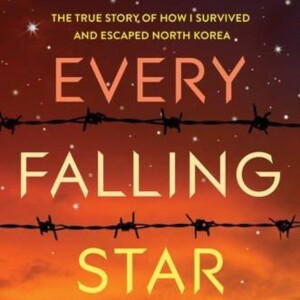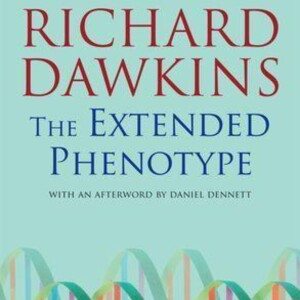Episodes

Friday May 30, 2025
Friday May 30, 2025
1 What's Shift
"Shift" by Hugh Howey is the second installment in the Wool series, exploring the origins of the dystopian world where humanity survives in giant subterranean silos. The novel unfolds through multiple timelines, primarily focusing on the events leading up to the creation of the silos and revealing the motivations of key characters involved in a controversial experiment intended to manage overpopulation and environmental collapse. The overarching theme delves into themes of power, control, and the ethical dilemmas of survival, as characters grapple with the consequences of their actions in a society built on secrets and lies. Through intricate storytelling, Howey examines the human condition and the struggle for freedom in a controlled existence.
2 Key Concepts of Shift
In "Shift" by Hugh Howey, the theme introduced in Chapter 1 revolves around transformation and the choices that lead to personal growth. This theme resonates throughout several chapters, particularly in Chapter 3, where the protagonist encounters challenges that test their resolve and prompt self-reflection, ultimately leading to a pivotal turning point. Similarly, Chapter 7 further explores the consequences of decisions made, illustrating how embracing change can lead to new opportunities and a deeper understanding of oneself. Throughout the narrative, the interplay of choices and transformation shapes the characters' journeys and reflects the central theme established in the opening chapter.
3 In-Depth Chapter Analysis of Shift by Hugh Howey
In "Shift" by Hugh Howey, the narrative unfolds across several chapters that intricately weave together themes of control, isolation, and the human condition in the face of dystopia. For instance, in the early chapters, particularly Chapter 1, we are introduced to the protagonist, Solo, who grapples with the revelations about the silos and their purpose. This chapter highlights the theme of control, as characters confront the reality of an oppressive system that dictates their lives and the parameters of their existence. The use of claustrophobic settings and the constant surveillance within the silos serve to amplify the sense of entrapment and the struggle for autonomy.
As the story progresses into later chapters, particularly Chapter 6, the narrative shifts to focus on Donald, who embodies the themes of guilt and responsibility as he becomes increasingly aware of the implications of the decisions made by those in power. This chapter deepens the exploration of isolation, illustrating how characters are not only physically separated by the silo walls but are also emotionally and ethically isolated in their struggles to reconcile personal agency with societal demands. The evolving perspectives of Solo and Donald, coupled with the stark realities of their world, reinforce the interconnected themes of control and alienation, prompting readers to reflect on the broader implications of governance and individual choices in a constrained environment.
Book Summary Audio Bookey https://www.bookey.app/audiobook/shift
Youtube https://www.youtube.com/watch?v=XcXjd0Qa_8w
Amazon https://www.amazon.com/Shift-Silo-Saga-Book-2/dp/B0BKR6LF72
Goodreads https://www.goodreads.com/book/show/17306293-shift

Thursday May 29, 2025
Thursday May 29, 2025
1 What's SELL LIKE CRAZY
"Sell Like Crazy" by Sabri Suby focuses on the art of effective sales and marketing strategies that can drive business growth. The book emphasizes the importance of understanding customer psychology, crafting compelling offers, and utilizing data-driven marketing techniques to attract and convert leads. Suby shares actionable steps to create persuasive sales funnels and optimize campaigns, aiming to empower entrepreneurs and marketers to maximize their sales potential. Overall, the theme revolves around building a robust sales system that caters to the needs of clients while ensuring sustainable business success.
2 Key Concepts of SELL LIKE CRAZY
In "Sell Like Crazy," the theme introduced in Chapter 1 focuses on the importance of understanding your target market and connecting with their deepest needs and desires. Subsequent chapters that directly relate to this theme include Chapter 2, which delves into market research and identifying customer pain points, and Chapter 4, where the author discusses crafting a compelling sales message that resonates with potential buyers. Both chapters emphasize the necessity of truly knowing your audience to tailor your approach, which aligns with the foundational concepts presented in the opening chapter.
3 In-Depth Chapter Analysis of SELL LIKE CRAZY by Sabri Suby,
"Sell Like Crazy" by Sabri Suby is structured around the central theme of effective marketing and sales strategies that drive business success. Each chapter builds on the premise that understanding the psychology of buyers is fundamental to selling effectively. For example, in Chapter 1, Suby emphasizes the importance of identifying the target market and understanding their pain points, aligning perfectly with the book's overall message that precise audience targeting is crucial for creating compelling offers. This is further developed in subsequent chapters, where he discusses the necessity of crafting irresistible lead magnets and nurturing leads through value-driven content, illustrating how these strategies are essential for building trust and converting prospects into customers.
In later chapters, Suby delves into the role of automation and scalable systems in selling, presenting practical tools and techniques that streamline the sales process. For instance, in Chapter 5, he introduces the concept of using sales funnels to optimize customer acquisition. This connects back to the overarching theme of maximizing sales efficiency through strategic marketing techniques. By linking practical advice with psychological insights into consumer behavior, Suby constructs a comprehensive framework that not only informs but empowers readers to take actionable steps toward business growth. Through these interconnected chapters, "Sell Like Crazy" ultimately asserts that mastering the art of selling is not just about closing deals but about creating lasting relationships and understanding customers' needs.
Book Summary Audio Bookey https://www.bookey.app/audiobook/sell-like-crazy
Youtube https://www.youtube.com/watch?v=XLcKR3yX800
Amazon https://www.amazon.com/SELL-LIKE-CRAZY-Customers-Possibly-ebook/dp/B07N7GRHNK
Goodreads https://www.goodreads.com/book/show/43787527-sell-like-crazy

Wednesday May 28, 2025
Wednesday May 28, 2025
1 What's One Nation Under Blackmail - Vol. 1
"One Nation Under Blackmail - Vol. 1" by Whitney Alyse Webb explores the intricate connections between political power, intelligence agencies, and organized crime in the United States, particularly focusing on the implications of blackmail techniques used to manipulate and control powerful figures. The book delves into historical and contemporary case studies, highlighting the roles of key players and institutions, while revealing how these relationships have shaped policy and governance. Webb argues that the systemic use of blackmail not only undermines democracy but also perpetuates a cycle of corruption and illicit activity within the nation's foundations.
2 Key Concepts of One Nation Under Blackmail - Vol. 1
In "One Nation Under Blackmail - Vol. 1," the theme introduced in Chapter 1 revolves around the intersection of power, corruption, and the manipulation of public institutions. Subsequent chapters that relate to this theme include those that explore historical instances of political corruption, the influence of hidden networks on governance, and the role of media in shaping public perception. These chapters collectively illustrate how systemic corruption undermines democracy and the rule of law, echoing the foundational ideas presented in Chapter 1.
3 In-Depth Chapter Analysis of One Nation Under Blackmail - Vol. 1 by Whitney Alyse Webb
In "One Nation Under Blackmail - Vol. 1" by Whitney Alyse Webb, several chapters delve into the interconnected themes of power, corruption, and the manipulation of individuals and institutions through blackmail. For instance, the chapter focusing on the history of intelligence agencies examines the deep-rooted practices of coercion used to maintain control over political figures and societal elites. Webb meticulously details instances where compromising information was strategically gathered and weaponized, showcasing how these tactics not only influence policy but also perpetuate a cycle of corruption that undermines democratic principles.
Another significant chapter explores the role of the media in perpetuating and concealing these manipulative practices. Webb provides examples of high-profile cases where journalists were complicit in covering up scandals, revealing how blackmail extends beyond individual actors to impact broader societal narratives. This theme is reinforced through the examination of specific cases involving influential individuals who were either silenced or coerced into compliance, highlighting the symbiotic relationship between media, politics, and blackmail that ultimately shapes public perception and policy directions. Collectively, these chapters reveal a complex web of influence that challenges the integrity of institutions and the accountability of those in power.
Book Summary Audio Bookey https://www.bookey.app/audiobook/one-nation-under-blackmail---vol-1
Youtube https://www.youtube.com/watch?v=VPkqOf4lirw
Amazon https://www.amazon.com/One-Nation-Under-Blackmail-Vol/dp/B0BYQGK3Z4
Goodreads https://www.goodreads.com/book/show/51074723-one-nation-under-blackmail-vol-1

Tuesday May 27, 2025
Tuesday May 27, 2025
1 What's Magnolia Parks
"Magnolia Parks" by Jessa Hastings explores themes of love, friendship, and the complexities of identity within the backdrop of a privileged social circle. The story follows Magnolia, a young woman navigating her tumultuous relationships and the pressures of her wealthy lifestyle in London. As she grapples with her feelings for her best friend, the enigmatic and charming Declan, she confronts issues of loyalty, jealousy, and self-discovery. The novel delves into the intricacies of personal connections and the impact of societal expectations, ultimately highlighting the challenge of finding one's true self amidst chaos and glamour.
2 Key Concepts of Magnolia Parks
In "Magnolia Parks" by Jessa Hastings, the theme of complicated relationships and societal expectations, introduced in Chapter 1, resonates throughout the novel. Subsequent chapters delve into the intricacies of friendships, love, and familial pressures, particularly in chapters where Magnolia navigates her tumultuous dynamics with her peers and grapples with her identity in a world defined by privilege and social standing. The ongoing conflicts and emotional struggles faced by Magnolia and her friends illuminate the overarching theme, showcasing how these elements impact their choices and relationships.
3 In-Depth Chapter Analysis of Magnolia Parks by Jessa Hastings
In "Magnolia Parks" by Jessa Hastings, the intricate dynamics of love and social status are illuminated through various chapters, particularly in Chapter 3 and Chapter 7. In Chapter 3, the protagonist, Magnolia, navigates the glitzy, high-pressure world of elite social circles in London. This chapter establishes the theme of societal expectations as Magnolia grapples with the nuances of her relationships, particularly her complicated connection with her ex-boyfriend, BJ. The lavish parties and superficial interactions highlight how wealth can influence personal connections and the longing for authenticity amidst a facade of privilege.
By Chapter 7, the stakes are raised as Magnolia confronts the emotional fallout from her past. This chapter delves deeper into her internal struggles, showcasing her vulnerability and yearning for genuine connections. The moment when she candidly reflects on her patterns of love and hurt emphasizes the theme of vulnerability in relationships, revealing how Magnolia's past continues to shape her present. The tension between her desire for freedom and the gravitational pull of her social environment creates a poignant exploration of love, identity, and the sacrifices made for acceptance. These chapters work together to highlight the complexities of navigating love within the constraints of societal expectations, ultimately portraying Magnolia's journey toward self-discovery and authenticity.
Book Summary Audio Bookey https://www.bookey.app/audiobook/magnolia-parks
Quotes https://www.bookey.app/quote-book/magnolia-parks
Youtube https://www.youtube.com/watch?v=X-2s7JsX2EA
Amazon https://www.amazon.com/Magnolia-Parks-Universe/dp/0593474864
Goodreads https://www.goodreads.com/book/show/58527403-magnolia-parks

Monday May 26, 2025
Monday May 26, 2025
1 What's Never Finished
"Never Finished" by David Goggins delves into themes of resilience, mental toughness, and the relentless pursuit of personal growth. Building on the inspirational journey presented in his previous book, "Can't Hurt Me," Goggins chronicles his life experiences, emphasizing the importance of pushing beyond limits, embracing discomfort, and overcoming adversity. Through a series of visceral anecdotes and practical lessons, he encourages readers to confront their fears and obstacles, illustrating that true transformation comes from an unwavering commitment to self-discipline and continuous improvement.
2 Key Concepts of Never Finished
"Never Finished" by David Goggins emphasizes the theme of resilience and the relentless pursuit of self-improvement in Chapter 1. This theme resonates throughout several chapters, particularly in Chapter 3, where Goggins discusses the importance of embracing discomfort and pushing beyond one's limits to achieve personal growth. Additionally, Chapter 6 highlights the notion of accountability and personal responsibility, reinforcing the idea that true change comes from within. Together, these chapters illustrate the core message of accountability and grit that Goggins advocates from the very beginning of the book.
3 In-Depth Chapter Analysis of Never Finished by David Goggins
In "Never Finished," David Goggins delves deep into the themes of resilience, mental toughness, and personal accountability through various chapters that reflect his life experiences and transformative philosophy. One notable chapter focuses on Goggins' time in the military, where he recounts grueling training sessions that tested not only his physical limits but also his mental fortitude. For example, during Navy SEAL training, Goggins discusses how he pushed through extreme fatigue and self-doubt, illustrating the theme of embracing discomfort as a path to growth. His relentless pursuit of overcoming these challenges serves as a motivational blueprint for readers, showcasing that excellence demands perseverance.
Another impactful chapter highlights Goggins' journey after experiencing personal loss and emotional turmoil, emphasizing the importance of confronting one's inner demons. He shares specific anecdotes about how he channeled his pain into motivation, illustrating the theme that adversity can lead to self-discovery and strength. By urging readers to take ownership of their struggles, Goggins fosters a mindset of resilience and accountability. Through these chapters, Goggins ultimately conveys that a "never finished" attitude—commitment to continuous improvement and refusal to settle—is essential for anyone striving for greatness.
Book Summary Audio Bookey https://www.bookey.app/audiobook/never-finished
Youtube https://www.youtube.com/watch?v=f4gro1gxbTI
Amazon https://www.amazon.com/Never-Finished-Unshackle-Your-Within/dp/1544534086
Goodreads https://www.goodreads.com/book/show/63079845-never-finished

Friday May 23, 2025
Friday May 23, 2025
1 What's Every Falling Star
"Every Falling Star" by Sungju Lee is a poignant memoir recounting the author’s harrowing experiences as a child growing up in North Korea and later as a homeless teen in South Korea. The overarching theme explores the impact of oppressive regimes on personal identity, freedom, and resilience. Lee vividly describes his life under a repressive government, the struggles of his family, and the challenges he faced after escaping to South Korea, where he encountered cultural dislocation and the harsh realities of survival. Through his journey, he highlights themes of hope, resilience, and the pursuit of a better life amidst adversity.
2 Key Concepts of Every Falling Star
In "Every Falling Star," the theme introduced in Chapter 1 revolves around the harsh realities of life in a North Korean orphanage, including the struggle for survival and the loss of freedom. This theme resonates throughout the book, particularly in chapters that depict the daily challenges faced by the protagonist, such as in Chapters 3 and 5, where the brutal conditions and the oppressive regime are highlighted. Additionally, Chapter 7 further emphasizes the theme as it explores the desire for hope and the yearning for a better life beyond the confines of the orphanage, illustrating the resilience of the human spirit amid adversity.
3 In-Depth Chapter Analysis of Every Falling Star by Sungju Lee
In "Every Falling Star" by Sungju Lee, the chapters unfold a poignant narrative that explores themes of survival, resilience, and the harsh realities of life in North Korea. For instance, in the early chapters, Lee recounts his idyllic childhood and the abrupt shift into a life of deprivation after his family's fall from grace when his father, a high-ranking official, is accused of treason. This transition starkly highlights how the theme of loss permeates his life, illustrating how quickly safety and stability can disappear. The stark contrast between his past and present is evident as he describes his struggles in the streets after being abandoned, emphasizing the cruelty of a regime that prioritizes loyalty above family.
As the story progresses, particularly in the middle chapters, Lee delves deeper into his experiences of survival alongside friends he makes while navigating the treacherous streets of Pyongyang. Here, the theme of camaraderie emerges as a powerful force against despair. For example, he details moments of connection with other street children, who become his makeshift family, demonstrating how solidarity can provide hope amid chaos. These relationships serve as a lifeline, underscoring the importance of human connections in overcoming adversity. Ultimately, in the latter chapters, Lee's journey of escaping North Korea serves as a culmination of his resilience and determination to reclaim his identity, reinforcing the overarching themes of hope and the quest for freedom throughout his narrative.
Book Summary Audio Bookey https://www.bookey.app/audiobook/every-falling-star
Quotes https://www.bookey.app/book/every-falling-star/quote
Youtube https://www.youtube.com/watch?v=4jaa2sTelk4
Amazon https://www.amazon.com/Every-Falling-Star-Survived-Escaped/dp/1419721321
Goodreads https://www.goodreads.com/book/show/28818317-every-falling-star

Thursday May 22, 2025
Thursday May 22, 2025
1 What's Complete Jewish Bible
The Complete Jewish Bible (CJB) presents the Scriptures with a focus on their Jewish context and heritage, aiming to bridge the gap between Judaism and Christianity. It includes the Old Testament (Tanakh) and the New Testament, translated to reflect the original Hebrew meaning and cultural nuances. The CJB emphasizes the continuity of God's covenant with His people, the significance of the Jewish roots of the Christian faith, and the teachings of Yeshua (Jesus) as a Jewish Messiah. Through its inclusive language and annotations, the CJB seeks to foster a deeper understanding and appreciation of the biblical text for both Jewish and Christian audiences.
2 Key Concepts of Complete Jewish Bible
In Chapter 1 of the Complete Jewish Bible, the theme revolves around the creation of the world and the establishment of God's order. Key chapters that relate to this theme include Genesis 1, where the account of creation is detailed, illustrating the power of God's word in bringing forth light, land, and life. Additionally, Genesis 2 expands on the relationship between God and humanity, highlighting the divine intention behind creation. Exodus 20, where the Ten Commandments are given, reflects God's established order for human living within the created world. These chapters collectively emphasize the foundational aspects of creation and the divine order intended for humanity.
3 In-Depth Chapter Analysis of Complete Jewish Bible by Anonymous
The Complete Jewish Bible (CJB) weaves together the themes of faith, covenant, and identity across its various chapters, echoing the core tenets of Judaism and offering a unique perspective on both the Tanakh (Hebrew Bible) and the New Testament writings. For instance, in Genesis, the covenant established with Abraham in Chapter 12 lays the foundational theme of a chosen people, highlighting a divine promise and responsibility that extends to his descendants. This notion of covenantal relationship manifests in the recurring narratives throughout the Torah that focus on Israel's journey, their struggles, and their guiding laws, illustrated in chapters such as Exodus where the giving of the Torah at Mount Sinai represents the formalization of this relationship.
Transitioning into the New Testament texts, the CJB presents a continuation of these themes through the life and teachings of Yeshua (Jesus). In Matthew 5, the Sermon on the Mount underscores the moral and ethical dimensions of the Jewish law, emphasizing how Yeshua fulfills the law rather than abolishing it—a crucial point in connecting Jewish identity and moral conduct to faith. This theme of fulfillment and continuity offers a bridge between the Hebrew Scriptures and the New Testament, as seen in Paul’s letters, where he often reflects on this covenantal relationship, advocating for the inclusion of Gentiles while upholding the Jewish law. Ultimately, the CJB encapsulates the intricate connections of faith and community through its chapters, inviting readers to engage with the complexities of Jewish identity and scriptural interpretation.
Book Summary Audio Bookey https://www.bookey.app/audiobook/complete-jewish-bible
Youtube https://www.youtube.com/watch?app=desktop&v=mUPNNwOhEhA
Amazon https://www.amazon.com/Complete-Jewish-Bible-Side-Side/dp/1598566598
Goodreads https://www.goodreads.com/book/show/82335.Complete_Jewish_Bible_

Wednesday May 21, 2025
Wednesday May 21, 2025
1 What's Before I Let Go
"Before I Let Go" by Kennedy Ryan explores themes of love, loss, and the complexities of relationships. The story centers on Yasmen, who must navigate her grief after the sudden death of her husband, while also wrestling with her feelings for Jae, her childhood friend. As Yasmen confronts her past and the life she must rebuild, the novel delves into the power of second chances, the importance of community, and the struggle to find joy amid heartbreak. Ryan's poignant storytelling highlights the resilience of the human spirit and the enduring bonds that shape our lives.
2 Key Concepts of Before I Let Go
In "Before I Let Go" by Kennedy Ryan, Chapter 1 introduces the theme of grief and the struggle to find closure after loss. This theme resonates throughout several chapters, particularly in Chapter 4, where the protagonist grapples with her memories and emotions tied to her lost loved one, exploring the complexities of moving on. Additionally, Chapter 7 delves into the protagonist's journey of healing and the necessity of facing her pain to embrace new beginnings, further emphasizing the importance of confronting grief to achieve emotional freedom. Together, these chapters highlight the ongoing battle with sorrow and the pursuit of hope.
3 In-Depth Chapter Analysis of Before I Let Go by Kennedy Ryan
In "Before I Let Go" by Kennedy Ryan, the themes of love, loss, and healing are intricately woven throughout the narrative, with each chapter contributing to the emotional depth of the story. For instance, in Chapter 5, the protagonist grapples with the haunting memories of her lost love while attempting to navigate her present life. This chapter highlights the theme of longing and the struggle to let go, as the protagonist reflects on the moments they shared, illustrating how the past continues to shape her identity. Specific details, such as her vivid recollections of their laughter and tenderness, further emphasize her internal conflict and the weight of unresolved emotions, showcasing how grief is not merely an ending but a continuous journey.
Conversely, Chapter 12 serves as a turning point, where the protagonist begins to embrace the possibility of healing and moving forward. The chapter is marked by a significant encounter that ignites a spark of hope within her. Here, the author beautifully captures the theme of renewal, as the protagonist realizes that love can coexist with loss. Specific examples, like her willingness to open her heart to new connections, demonstrate her growth and resilience. The juxtaposition of sorrow and hope in this chapter highlights the complex nature of love—how it can both hurt and heal. Through these chapters, Ryan effectively illustrates the multifaceted aspects of grief and the journey toward acceptance, grounding the emotional arc in relatable experiences.
Book Summary Audio Bookey https://www.bookey.app/audiobook/before-i-let-go
Quotes https://www.bookey.app/book/before-i-let-go/quote
Youtube https://www.youtube.com/watch?v=zYxwGXmFs8Q
Amazon https://www.amazon.com/Before-Let-Go-Kennedy-Ryan/dp/1538706792
Goodreads https://www.goodreads.com/book/show/60568471-before-i-let-go

Tuesday May 20, 2025
Tuesday May 20, 2025
1 What's The Extended Phenotype
In "The Extended Phenotype," Richard Dawkins expands on his concept of the gene-centered view of evolution, arguing that the influence of genes extends beyond the physical traits of organisms to include the effects they have on their environments and other organisms. He posits that the true expression of an organism's genetic information—its "extended phenotype"—can manifest in behaviors, structures, and ecological modifications that are not limited to the organism itself but can influence the survival and reproductive success of both the organism and its kin. This perspective challenges traditional views of heredity and emphasizes the interconnectedness of genes, behavior, and ecological interactions, highlighting the complexity of evolutionary processes.
2 Key Concepts of The Extended Phenotype
In "The Extended Phenotype," Richard Dawkins explores the concept of genes influencing not only the organism's physical traits but also its behavior and environment, extending their effects beyond the individual. This theme is prevalent throughout multiple chapters of the book, particularly in Chapter 2, where Dawkins discusses the role of parasites and how they manipulate host behavior, emphasizing the extended influence of genes. Additionally, Chapter 4 delves into the effects of genes on the architecture of animal structures, further illustrating the ways in which genetic information manifests beyond the organism itself, reinforcing the ideas presented in Chapter 1 about the far-reaching implications of the extended phenotype.
3 In-Depth Chapter Analysis of The Extended Phenotype by Richard Dawkins
In "The Extended Phenotype," Richard Dawkins expands on his foundational ideas about gene-centered evolution introduced in "The Selfish Gene." Each chapter builds on the theme that the influence of genes extends beyond the organism's body to the environment, exemplifying this with various case studies from nature. For instance, in Chapter 1, titled "The Extended Phenotype," Dawkins explicitly defines the concept, illustrating how genes can affect the behavior of organisms and create structures in their environment, such as beaver dams or spider webs, which serve as extensions of their phenotypic expression. This sets the tone for the book, showcasing how the effects of genes can manifest externally, thereby influencing ecological and evolutionary processes.
As the chapters progress, Dawkins presents compelling evidence through diverse examples—like the role of parasitic manipulation in Chapter 4, where the behavior of a larva changes the behavior of its host to aid its own survival and reproduction. This connection reinforces the central theme that genes influence not only the organisms they reside in but also the broader ecological canvas they interact with. For instance, Chapter 9 interprets the intricate behaviors of social insects, further exhibiting how the actions driven by genetic imperatives sculpt complex social structures. The culmination of these insights positions the extended phenotype as a crucial framework for understanding evolution, emphasizing that genes are integral in crafting both biology and the environment in which life unfolds.
Book Summary Audio Bookey https://www.bookey.app/audiobook/the-extended-phenotype
Quotes https://www.bookey.app/book/the-extended-phenotype/quote
Youtube https://www.youtube.com/watch?v=WQkPaRsHAwI
Amazon https://www.amazon.com/Extended-Phenotype-Reach-Popular-Science/dp/0192880519
Goodreads https://www.goodreads.com/book/show/61538.The_Extended_Phenotype

Monday May 19, 2025
Monday May 19, 2025
1 What's The Millennium Wolves
"The Millennium Wolves" by Sapir A. Englard is a paranormal romance novel that explores themes of love, desire, and the struggle for power within a world inhabited by werewolves. The story follows a young woman named Elysia, who navigates the complex dynamics of wolf packs and their political intrigues while grappling with her own identity and latent abilities. As tensions rise between rival factions, Elysia finds herself torn between her growing feelings for a powerful alpha and her duty to protect her loved ones, ultimately leading to a journey of self-discovery and the pursuit of true belonging in a tumultuous supernatural landscape.
2 Key Concepts of The Millennium Wolves
In "The Millennium Wolves," Chapter 1 establishes a theme of forbidden attraction and the complexities of desire. This theme resonates throughout the novel, particularly in chapters that explore the protagonist's interactions with the wolves and their seductive allure. Key chapters that relate to this theme include those that delve into the protagonist's internal conflicts regarding her feelings for the wolves, her struggles to resist their pull, and the dangers that come with such attraction. The tension between desire and the consequences of embracing it is a recurring motif that deepens the emotional stakes of the story, illustrating the allure and peril of forbidden love in a supernatural context.
3 In-Depth Chapter Analysis of The Millennium Wolves by Sapir A. Englard
"The Millennium Wolves" by Sapir A. Englard explores themes of desire, power dynamics, and the complexity of relationships through its various chapters. In the early chapters, we are introduced to the protagonist, Leah, who grapples with her identity and the intense pull of her desires within a supernatural framework. For example, Chapter 2 emphasizes Leah's awakening to her wolf heritage, symbolizing the duality of her nature—the human and the primal. This internal conflict sets the stage for her struggles throughout the narrative, highlighting the theme of self-discovery as she navigates love and power within her pack.
As the story progresses, particularly in Chapter 5, the theme of power dynamics is further explored through Leah's interactions with her love interests, particularly those who wield influence in the werewolf hierarchy. The chapter's tension underscores the dangers of desire coupled with vulnerability, as Leah is torn between her yearning for independence and the allure of submission to a dominant partner. This chapter exemplifies the overarching theme of the struggle for agency in relationships, illustrating how Leah's choices and desires shape her path, while also reflecting on societal expectations and personal empowerment. The intricate connections between these chapters create a rich tapestry that highlights the visceral and often tumultuous journey of self-realization amidst supernatural challenges.
Book Summary Audio Bookey https://www.bookey.app/audiobook/the-millennium-wolves
Youtube https://www.youtube.com/watch?v=IlGdZbdkNF0
Amazon https://www.amazon.com/Cloak-Vampire-Sapir-Englard-ebook/dp/B0CMF4Y1NG
Goodreads https://www.goodreads.com/book/show/60120175-the-millennium-wolves-series








